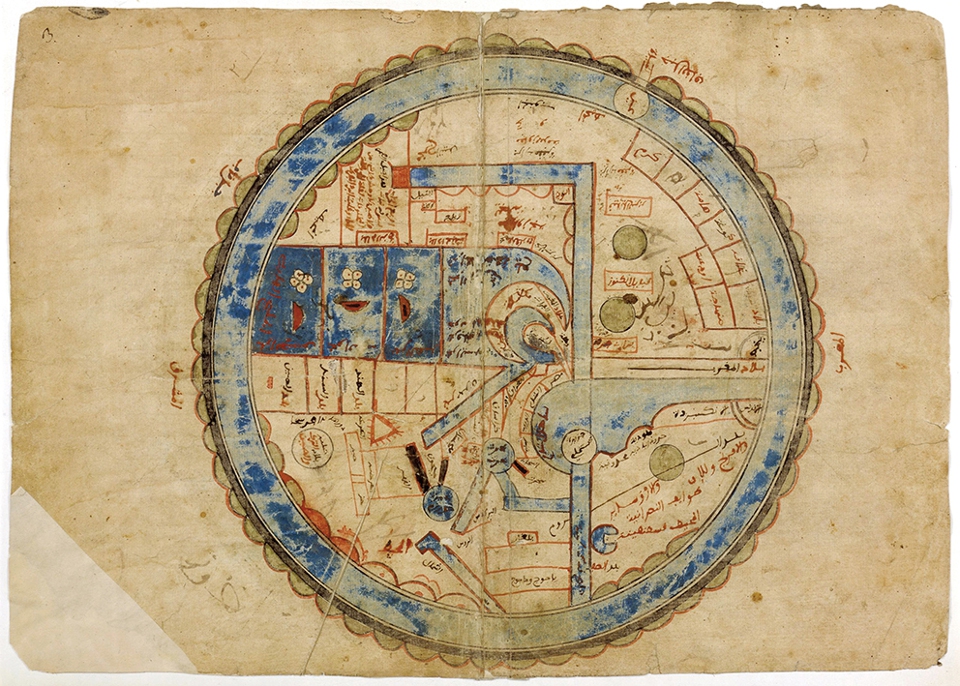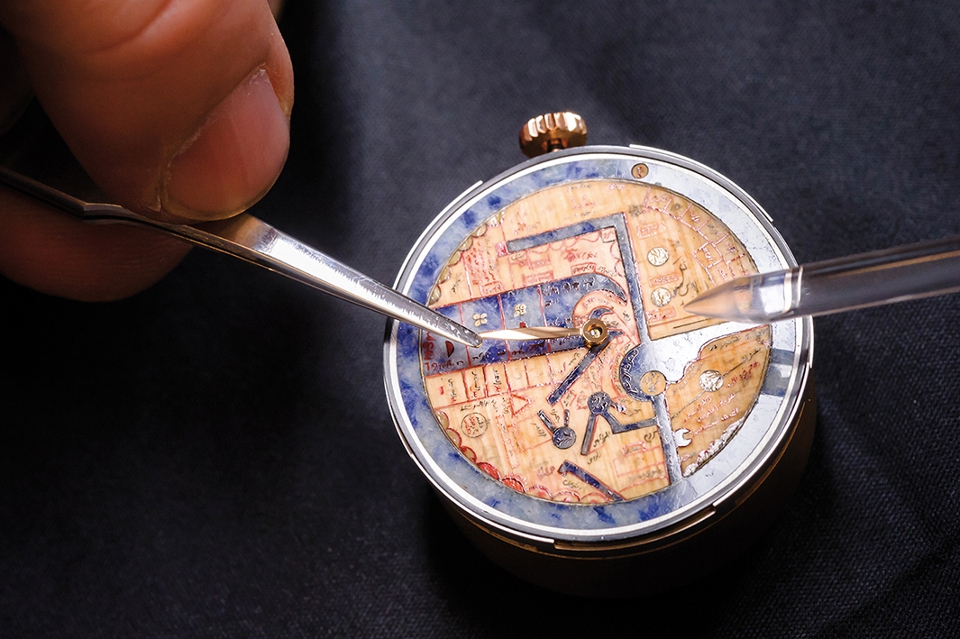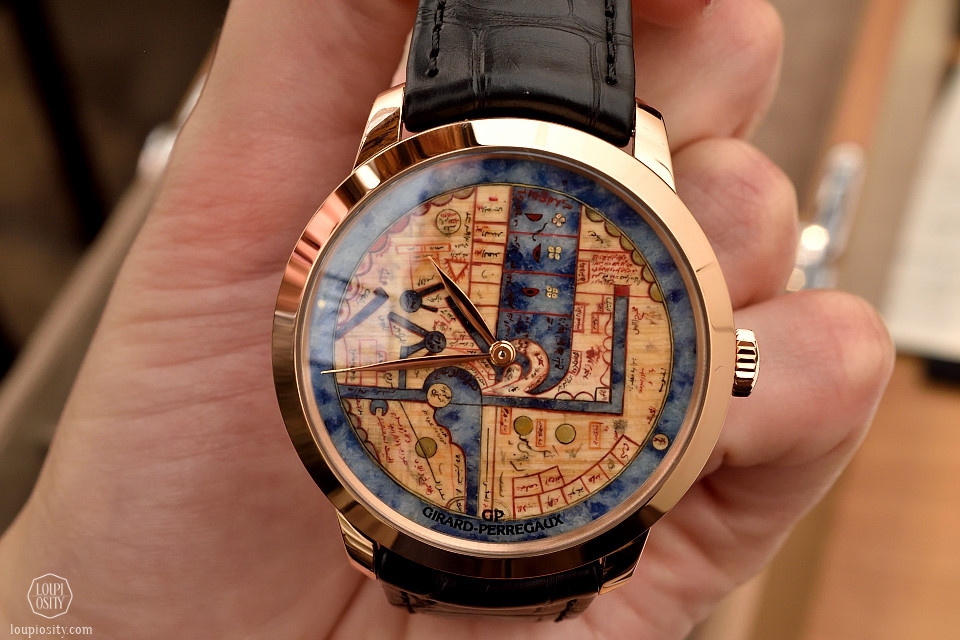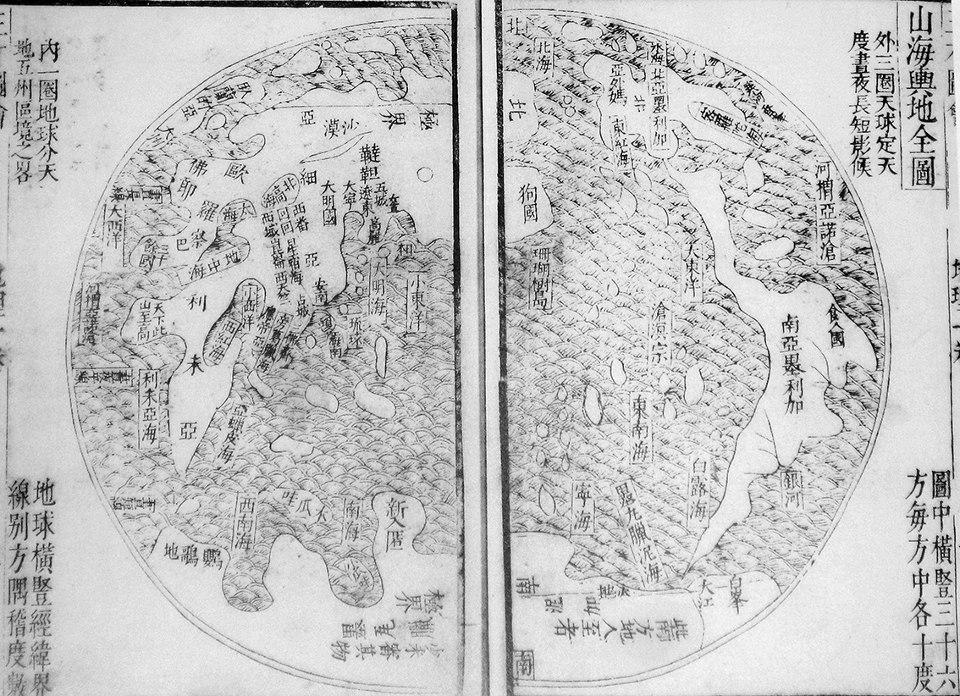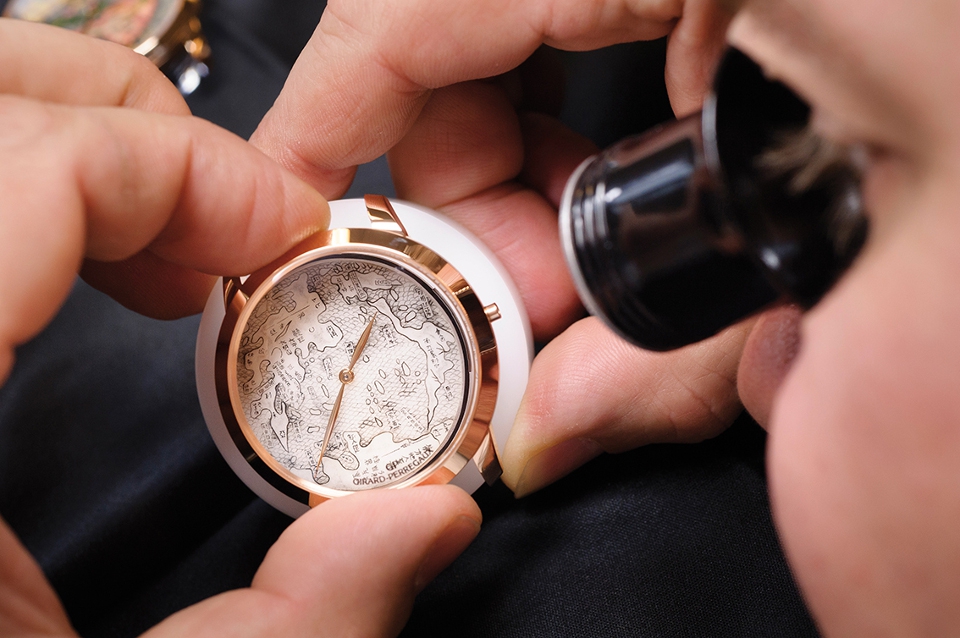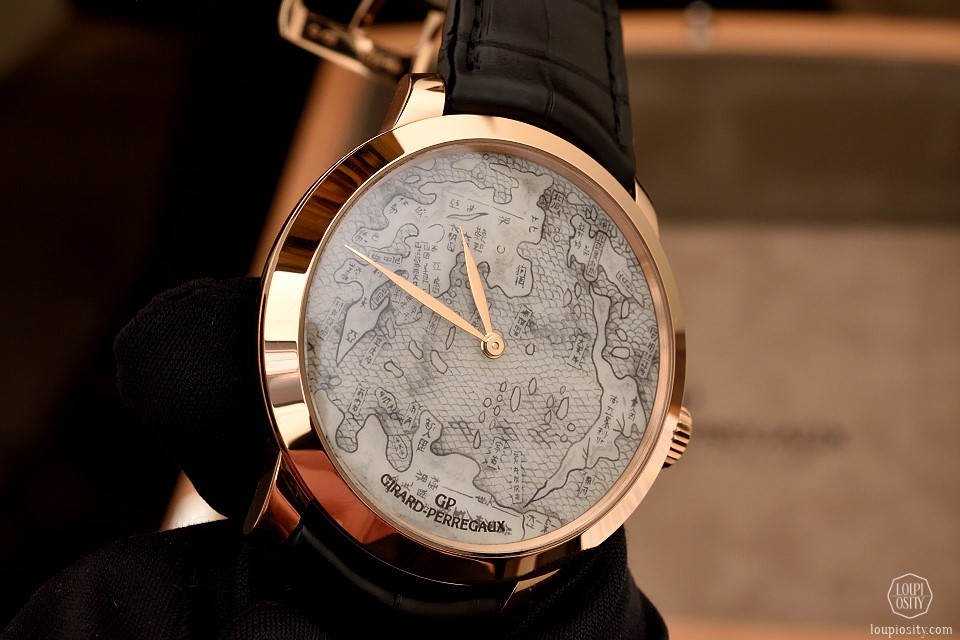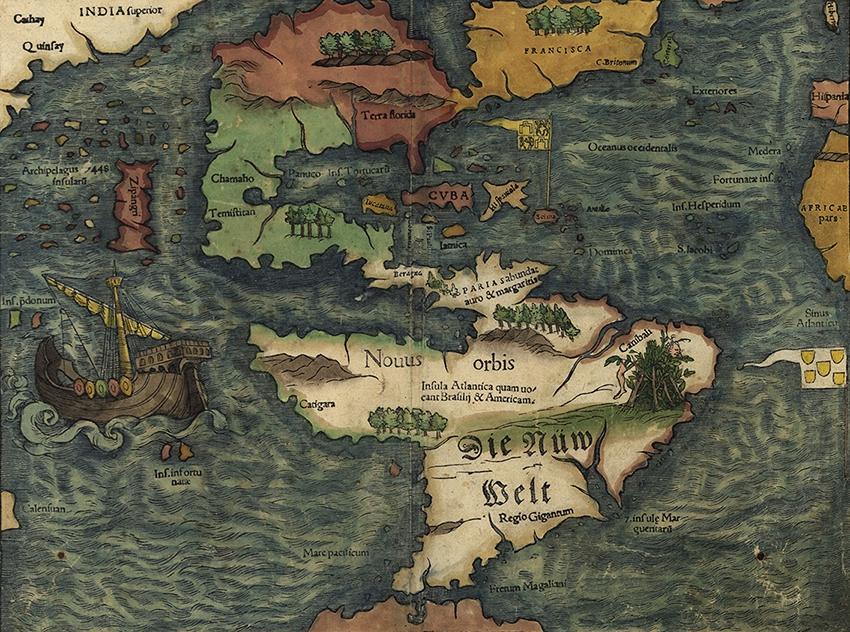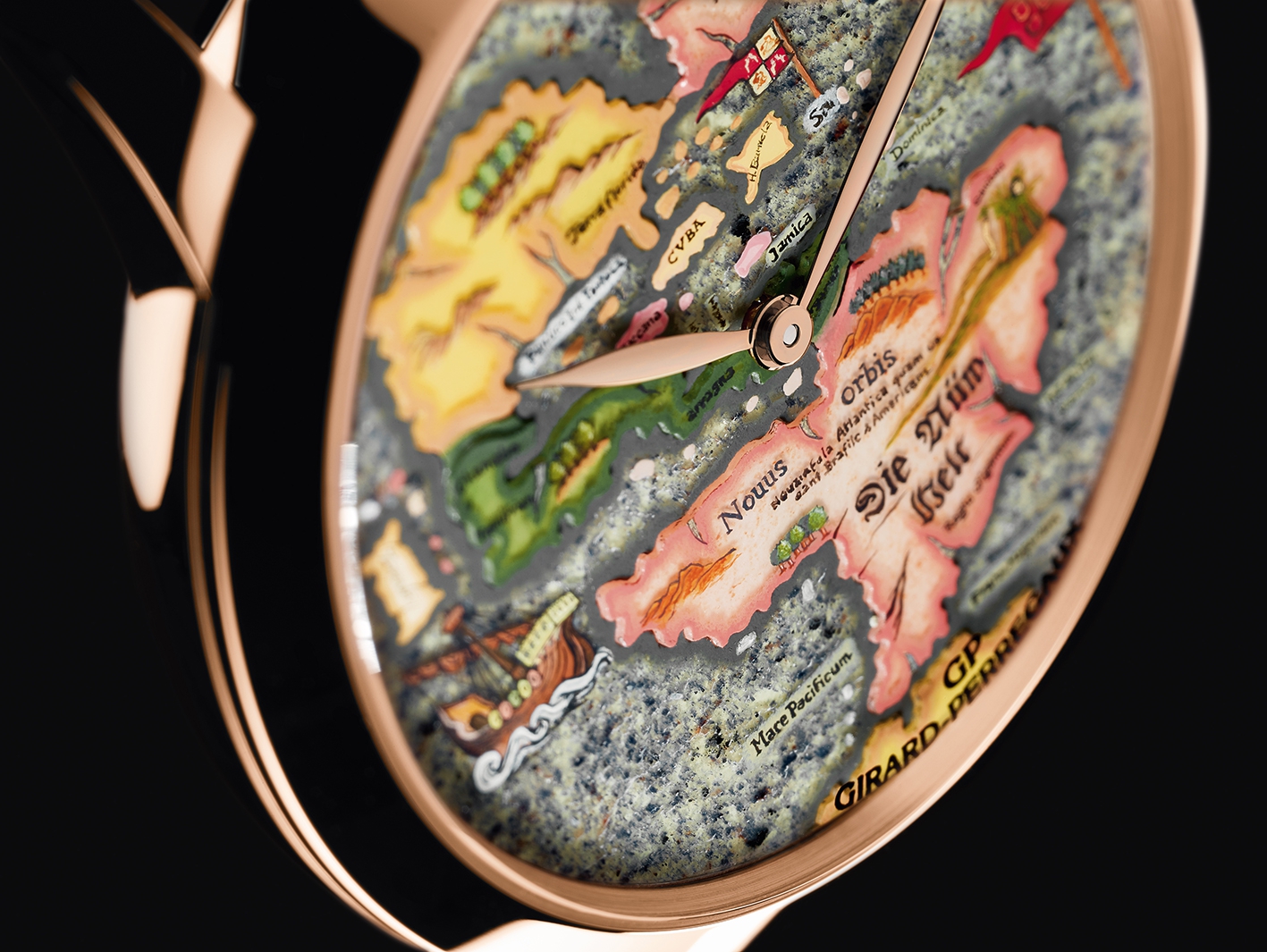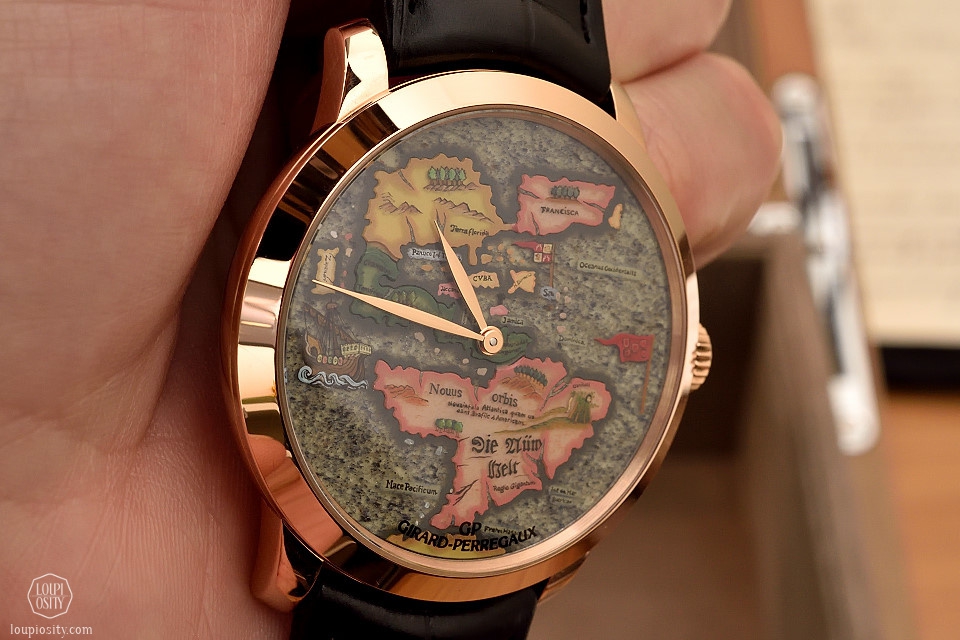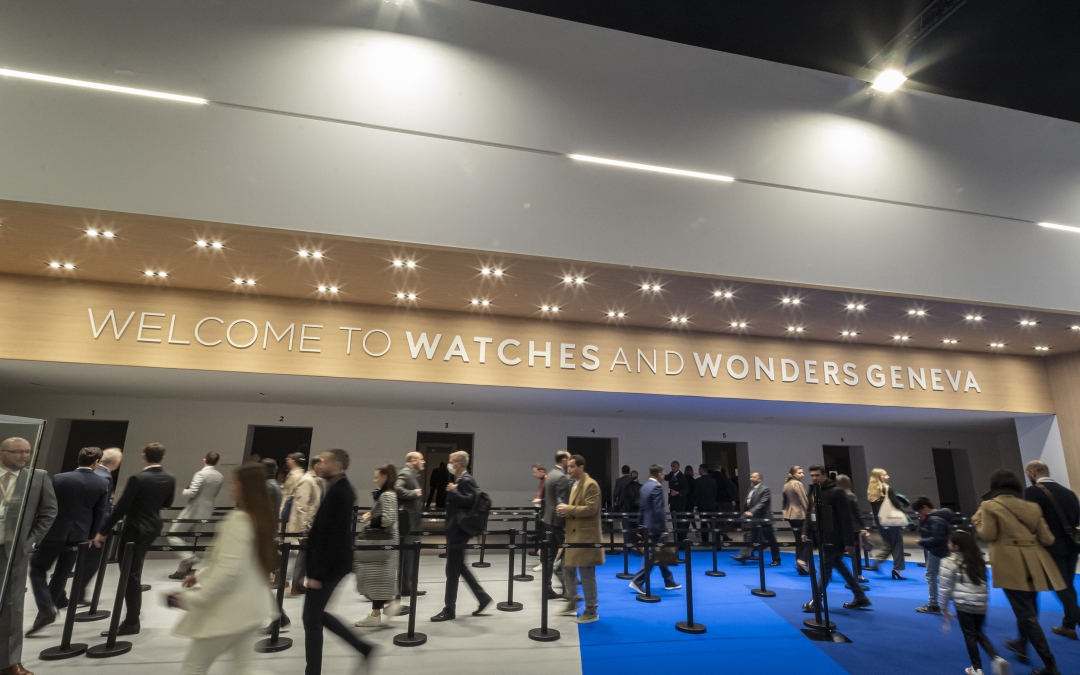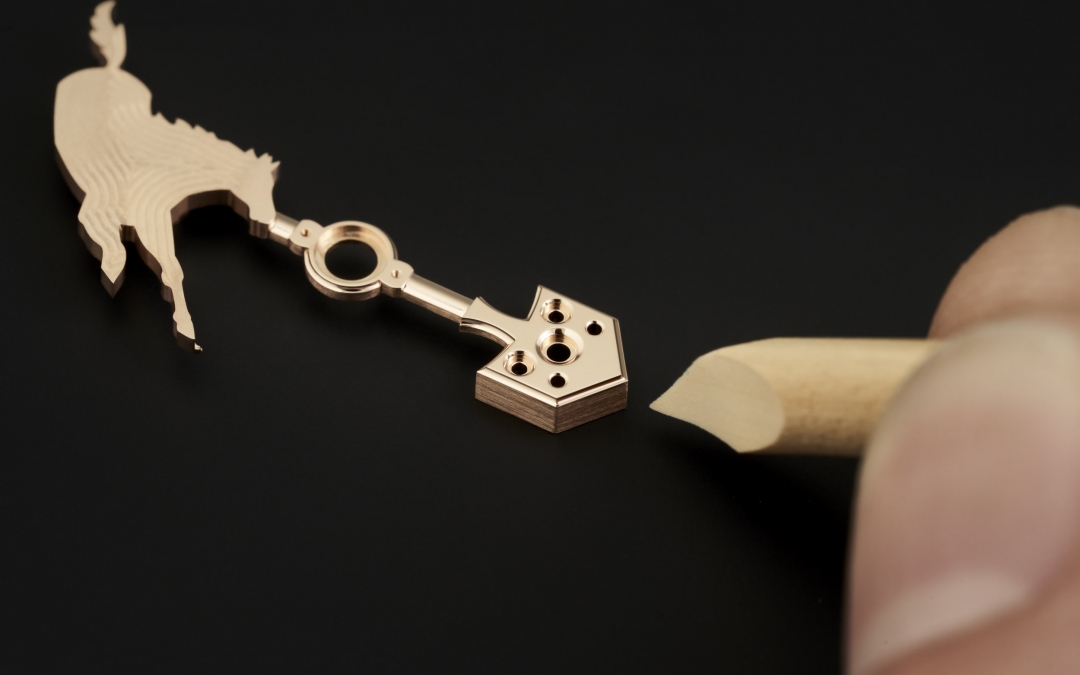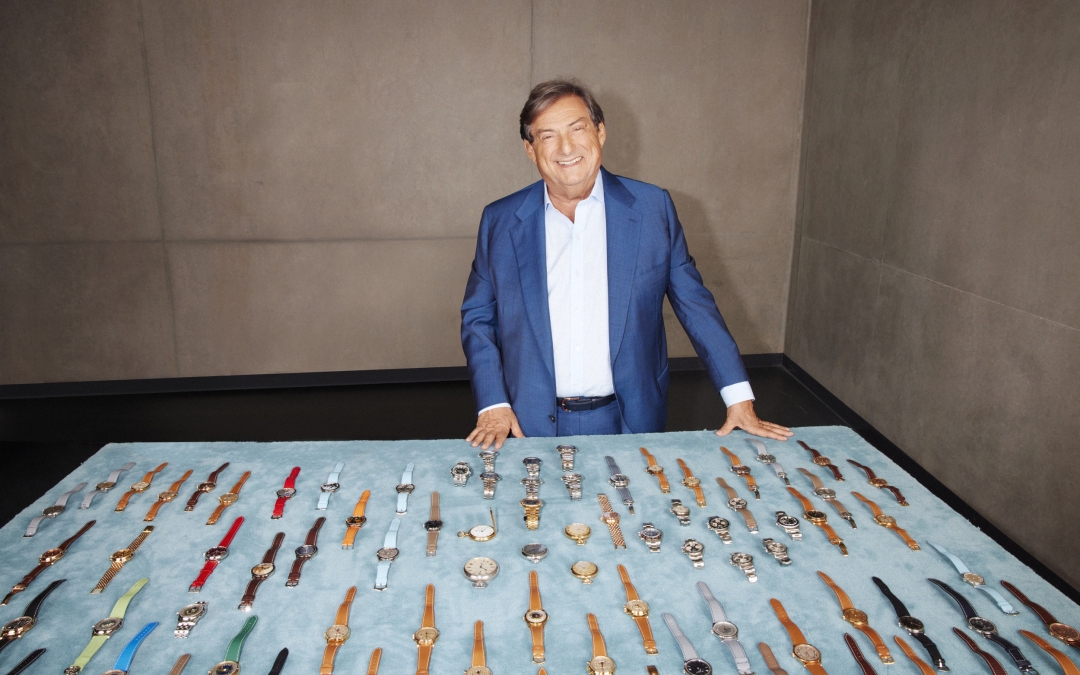The so-called “Cabinet of curiosities” was the predecessor of today’s museums. Albeit collections were gathered even in ancient cultures, Renaissance brought to life the first ever selections which were very close to the modern definition of what a museum is. The Wunderkammer or curiosity cabinets were collections of rare, valuable, historically important or unusual objects.
Girard-Perregaux made a tribute to these Cabinets with the artistic Chamber of Wonders line. Three timepieces, the The Pearl of Wonders, the Terrestrial Map and The New World (each are limited editions of 18 pieces) showcased three different cartographic approaches from the former centuries.
The great artisans in La Chaux-de-Fonds’ Manufacture created tiny masterpieces inspired by these maps.
The Pearl of Wonders
The geographer Ibn al-Wardi from early 15th century drew a map centred on the Arabian Peninsula.
Interpreted to the timepiece, the Nile is a wide blue line, flowing into the Mediterranean. The Arabian Peninsula is in the centre, surrounded by the Red Sea. The other bigger motifs are India and China.
Islamic sacred geography differs from the Ptolemaic tradition in that it does not employ cartographic grids, or longitude and latitude scales; as a rule, these used Mecca and the Ka‘ba as the centre of the world. The tradition is generally associated with tenth century scholars such as al-Balkhi, al-Istakhri, al-Muqaddasi, Ibn Hawqal, and the ninth century geographer Ibn Khurdadhbeh (d. 912 AD) who devised the earliest known geographical work using the Ka‘ba as the centre of the world in his Kitab al-Masalik wa’l-Mamalik. Source: University of Pennsylvania Libraries, Schoenberg Center
The base of this map on the dial is a sodalite, a rich blue, hard, structured stone, which is engraved by hand. On this stone there is a very thin (0.25mm) fragmented mosaic of a papyrus, shaping the continents. A miniature painter reproduced the contours of the ancient map.
The Terrestrial Map
16th century Jesuit monk Matteo Ricci (who was also a theologian, philosopher, mathematician, cosmologist and astronomer), was one of the founders of the Chinese Jesuit mission and one of the key figures of the history of Christianity in China. An interesting fact is that as a missionary, Ricci introduced China to many European technological innovations, such as mechanical watches. He was so successful at donig this, that he became the “guardian saint” of Chinese watchmakers. As a sign of the appreciation for his wisdom, Ricci was one of the few Westerners who were allowed to enter the walls of the Forbidden City.
The creation of the first world map, unifying the European and Chinese cartographic knowledge is also attributed to Matteo Ricci – this was the first map depicting 5 continents.
The dial of the watch inspired by this map is a white jade stone, perfectly flattened. A skilful handed miniature-painter drew the shapes and details of the continents with a special ink.
The New World “Novus Orbis”
Sebastian Münster was born in 1489 in Hesse, Germany. He studied Hebrew, Greek, mathematics, cosmography, and geography. The “Novus Orbis”, a map of the world, was a collaborative effort between Münster and Hans Holbein the Younger, an artist and engraver.
Girard-Perregaux honoured this historical cooperation with a special stone marquetry, blending the tones of blue and pink aventurine, calcite and Canadian nephrite. The finely selected stones are carved into extremely thin mini-disks. The cutting and assembly of these micro-stones and the miniature painting require expert artisan hands; extraordinary patience and accuracy.
All the pieces are powered by an in-house mechanical, automatic movement.
Photo credits: Girard-Perregaux, Loupiosity.com.
All registered trademarks are property of their respective owners.
All rights reserved.

